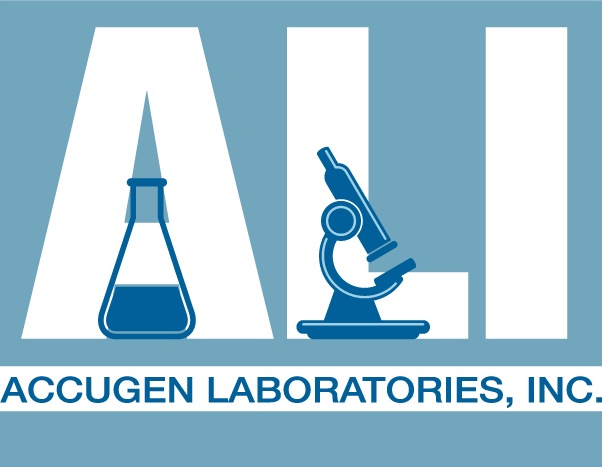LAL Endotoxin Testing
Endotoxin Testing (LAL Test)
Endotoxin is a toxin that is released from gram-negative organisms, the tests determines whether these organisms are present (alive or dead) through the presence or lack thereof of those toxins.
Accugen Labs provide endotoxin testing for pharmaceutical, biopharmaceutical, medical device, research and other industries. Endotoxin testing is carried out during various phases of manufacturing and developments including Raw material testing, Bulk lot release testing, final product release testing etc.
Endotoxin Testing Methods
Gel Clot Endotoxin Test
Chromogenic Endotoxin Test
Turbidimetric Endotoxin Test
Bacterial endotoxin test by gel clot method
Accugen laboratories utilize the LAL endotoxin test (Limulus Amebocyte Lysate) Gel Clot method to test raw materials or end products for the presence of endotoxins. This method uses components found in the blood of the Blue Horseshoe Crab, Limulus polyphemus, which forms a gel-like clot when incubated in the presence of endotoxins. This method is used to determine if products or materials are "endotoxin free". The sensitivity or detection limit of the endotoxin test is 0.06 EU/ml (Endotoxin Units). Products and materials can be certified to a sensitivity of 0.03 EU/ml upon request.
Upon receiving the product to be tested at Accugen Laboratories, a product extract is made and then exposed to and incubated with the horseshoe crab lysate (LAL). The product extract is incubated along with a standard series of the Control Standard Endotoxin (CSE) as the positive control and the unexposed extract fluid as a negative control. After the incubation period, the tubes containing the controls and the extract are observed for the presence of the gel clot. If it clots, endotoxin is present. If no clot is observed, the product is free of endotoxin.
Qualitative or Quantitative?
When using the LAL Endotoxin Gel Clot method, there are two separate types of tests that can be performed on a particular product, a qualtitative or a quantitative assay.
The quantitative LAL assay endotoxin testing is usually used on liquid products in which a Preliminary Assay and a Validation of a dilution series is performed. Although not common, the quantitative assay can be performed on devices. The Preliminary Assay endotoxin tests the pH of the product. The pH must be compatible with the LAL gel clot assay in order for a validation to be performed.
Qualitative endotoxin testing also utilizes the LAL Endotoxin Gel Clot method but rather than trying to detect the quantitative level of endotoxins, it tests the endotoxin levels of the product to be either greater than or less than the sensitivity of the test, which is 0.03 EU/ml. This type of test can be performed on solid and liquid products.
An Inhibition/Enhancement Validation must be performed before Routine Testing can be performed on any product.
Bacterial endotoxin test by Chrmogenic LAL Endotoxin Test Method
The kinetic chromogenic endotoxin test is a reaction between bacterial endotoxin present in a test material and synthetic chromogenic LAL reagents. Color changes if endotoxin is present in the test material. Test sensitivity depends upon the specific lysate used. Lowest detection limit in case of kinetic chromogenic test is 0.005 EU/ml.
Bacterial endotoxin test by Turbidimeteric LAL Endotoxin Test Method
Turbidimetric endotoxin test determines the cloudiness of the solution. If endotoxin is present, clotting of the solution results in cloudiness which reduces the transmittance of light when observed under spectrophotometer. Test sensitivity depends upon the specific lysate used. Lowest detection limit in case of turbidimeteric endotoxin test is 0.005 EU/ml as compared to 0.03 EU/ml in case of gel clot endotoxin test method.
Sample Requirements - Endotoxin Testing
USP requires 3% of the production lot with a minimum of 3 and maximum of 10 devices to be pooled and tested. For liquid samples, a minimum of 5 ml is required and powder samples require enough material to reconstitute into a minimum of 5 ml pyrogen-free water. Initial validation on 3 lots must be performed in order to validate the method of testing for a given product.
Turnaround Time - Endotoxin Testing
24-48 hours
Additional Information:
Frederick Bang in the early 1950's discovered that the horseshoe crab's blood cells, called amoebocytes, contain a clotting agent that attaches to dangerous endotoxins produced by gram negative bacteria. The test was accepted by the United States Food and Drug Administration (FDA) in 1983 as a standard test for endotoxins. The FDA established guidelines for LAL testing of pharmaceuticals and medical devices in 1987.
Endotoxin is an essential lipopolysacchride (LPS) component of the cell wall of Gram-negative bacteria which elicits a pyrogenic response when injected into the human bloodstream. They are also toxic to cells grown in tissue culture conditions. When the bacterial cell dies, the membrane of the cell ruptures and endotoxins are released into the surrounding environment. This can cause contamination that may have adverse effects on a variety of applications and experiments. Endotoxins can be found in the air, water, soil, via human contact, and any non-sterile environment.
Testing your product lines for this common contaminant will add integrity to your products .
Email: support@accugenlabs.com
Toll-Free: 800-282-7102
Fax: 630-812-2219 |













